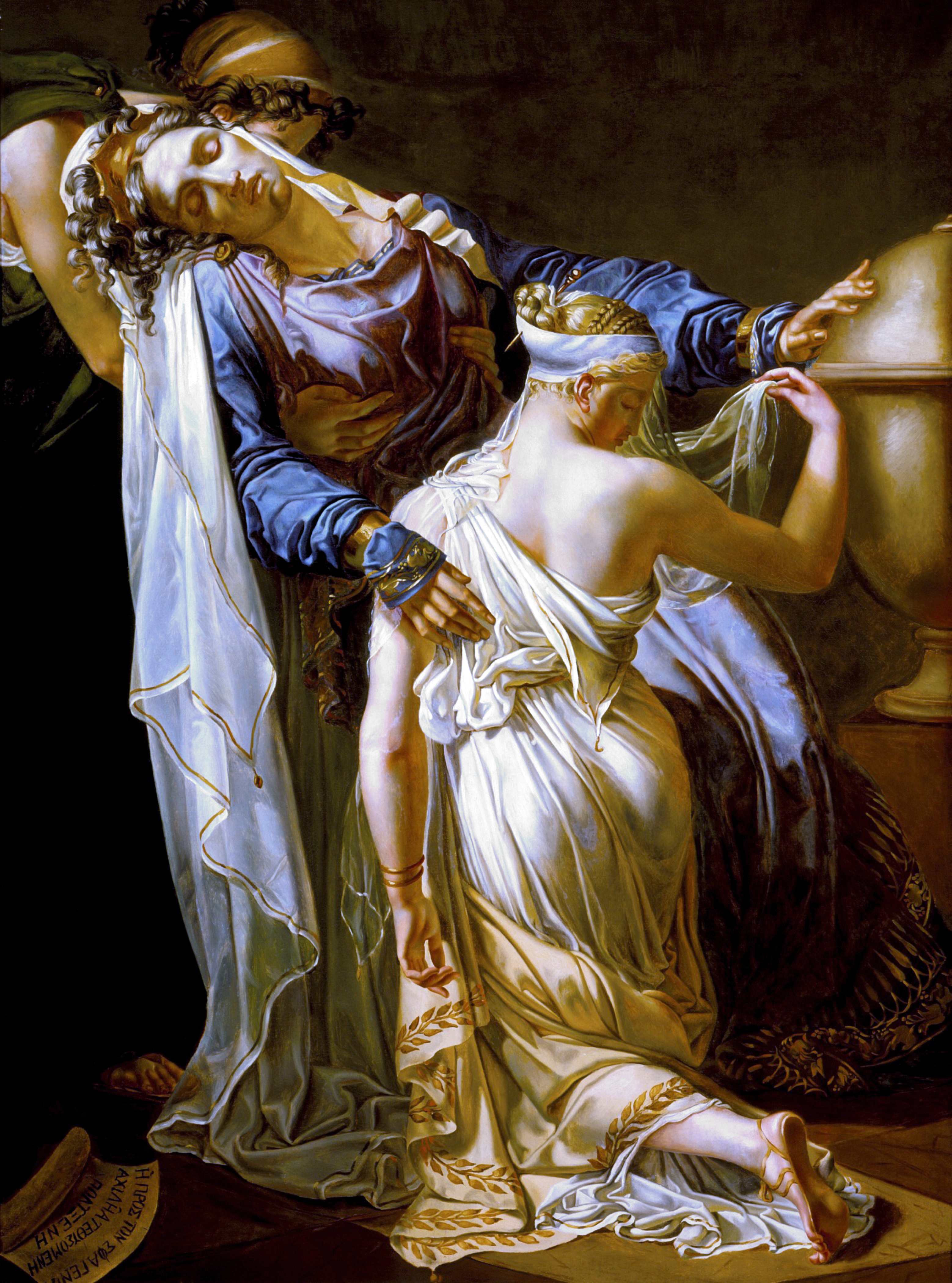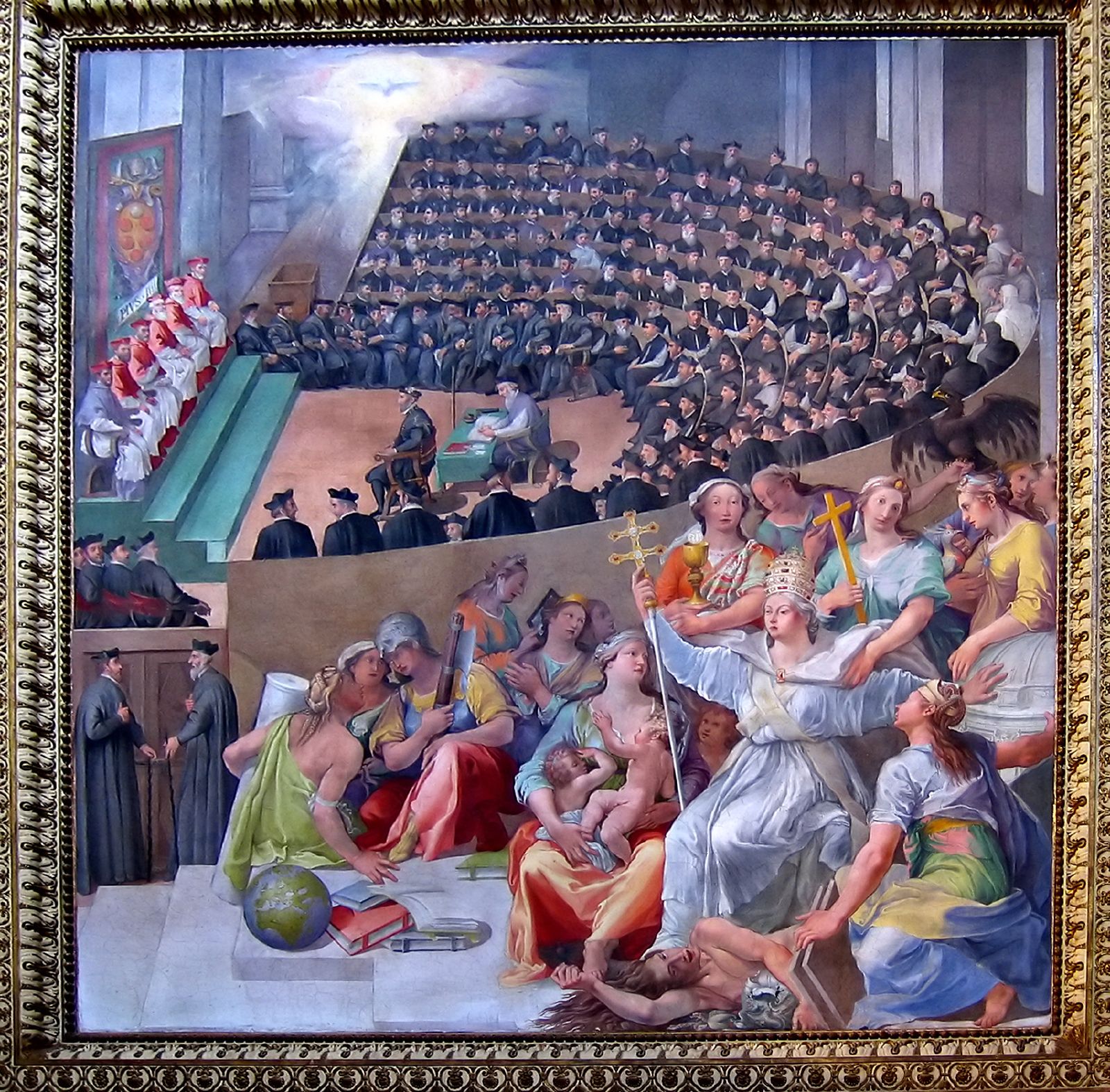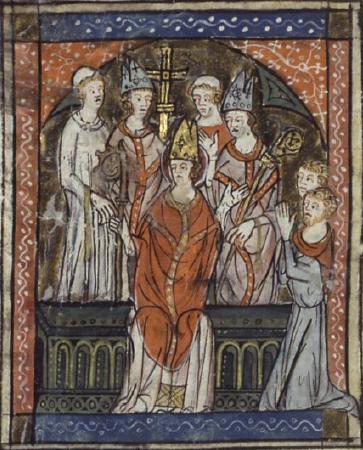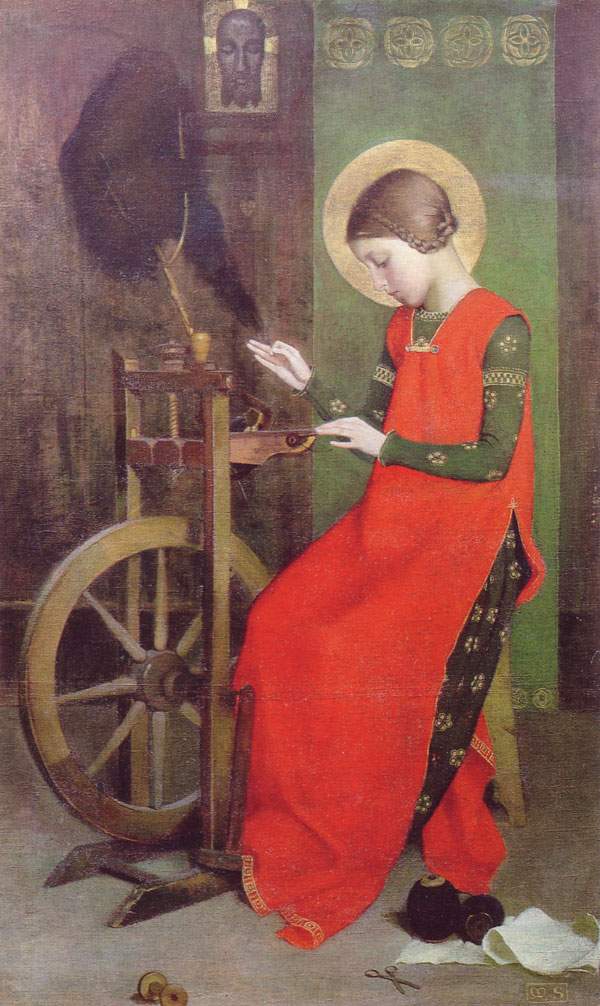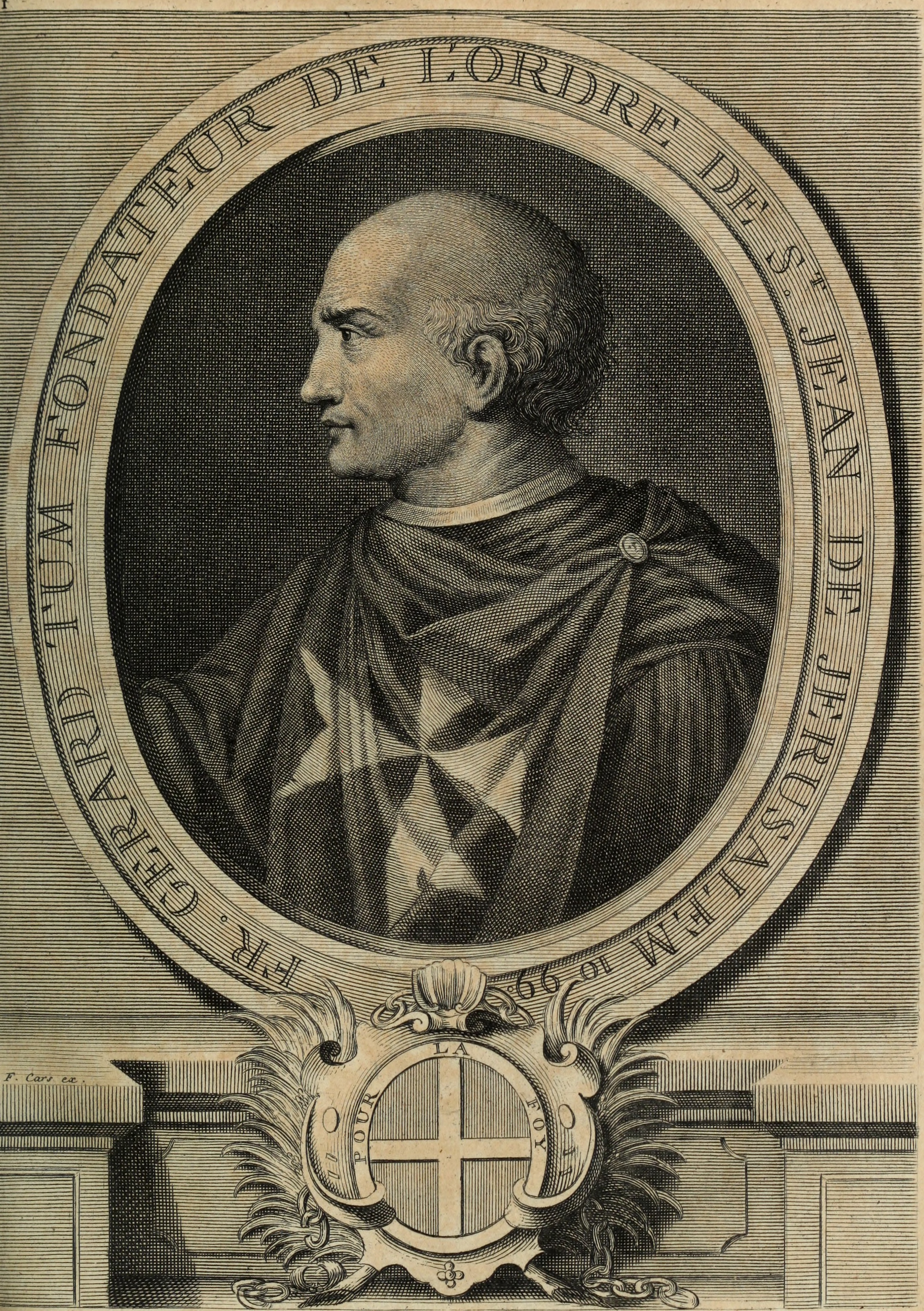|
Saint Elizabeth Of Hungary Church, Paris
Saint Elizabeth of Hungary Church () is a Roman Catholic church located at 195 rue du Temple, near Place de la Republique in the 3rd arrondissement of Paris, France. It is named for Saint Elizabeth of Hungary, a Princess of Hungary in the 13th century who became known as a symbol of Christian charity. The first stone of the church was laid by Marie de Medicis in 1628. The facade was inspired by the Church of the GesĂą in Rome and the Jesuit style, while the later architecture drew upon the Beaux-Arts architecture and neoclassicism. It was classified as an historic monument of France in 1937. History The church was originally built as a chapel for the Dames of Saint Elizabeth, part of Third Order of Saint Francis, of which Saint Elizabeth of Hungary had been an early member, but only the nave and the left aisle were finished by 1645. The church was consecrated in 1646 by the future cardinal of Retz, and dedicated to Notre-Dame of Pity and Saint Elizabeth of Hungary. During the Fr ... [...More Info...] [...Related Items...] OR: [Wikipedia] [Google] [Baidu] |
Roman Catholic
The Catholic Church (), also known as the Roman Catholic Church, is the largest Christian church, with 1.27 to 1.41 billion baptized Catholics worldwide as of 2025. It is among the world's oldest and largest international institutions and has played a prominent role in the history and development of Western civilization. O'Collins, p. v (preface). The church consists of 24 ''sui iuris'' (autonomous) churches, including the Latin Church and 23 Eastern Catholic Churches, which comprise almost 3,500 dioceses and eparchies around the world, each overseen by one or more bishops. The pope, who is the bishop of Rome, is the chief pastor of the church. The core beliefs of Catholicism are found in the Nicene Creed. The Catholic Church teaches that it is the one, holy, catholic and apostolic church founded by Jesus Christ in his Great Commission, that its bishops are the successors of Christ's apostles, and that the pope is the successor of Saint Peter, upo ... [...More Info...] [...Related Items...] OR: [Wikipedia] [Google] [Baidu] |
Napoleon III
Napoleon III (Charles-Louis Napoléon Bonaparte; 20 April 18089 January 1873) was President of France from 1848 to 1852 and then Emperor of the French from 1852 until his deposition in 1870. He was the first president, second emperor, and last monarch of France. Prior to his reign, Napoleon III was known as Louis Napoleon Bonaparte. He was born at the height of the First French Empire in the Tuileries Palace at Paris, the son of Louis Bonaparte, King of Holland (r. 1806–1810), and Hortense de Beauharnais, and paternal nephew of the reigning Emperor Napoleon I. It would only be two months following his birth that he, in accordance with Napoleon I's dynastic naming policy, would be bestowed the name of Charles-Louis Napoleon, however, shortly thereafter, Charles was removed from his name. Louis Napoleon Bonaparte was the first and only president of the French Second Republic, 1848 French presidential election, elected in 1848. He 1851 French coup d'état, seized power by force i ... [...More Info...] [...Related Items...] OR: [Wikipedia] [Google] [Baidu] |
Merry-Joseph Blondel
Merry-Joseph Blondel (; 25 July 1781 – 12 June 1853) was a French history painter of the Neoclassical school. He was a winner of the prestigious Prix de Rome in 1803. After the Salon of 1824, he was bestowed with the rank of ''Knight'' in the order of the ''Legion d'Honneur'' by Charles X of France and offered a professorship at the École nationale supérieure des Beaux-Arts: a position in which he remained until his death in 1853. In 1832, he was elected to a seat at the Académie des Beaux-Arts in Paris. Blondel was a student of the Neoclassical master Baron Jean-Baptiste Regnault and from 1809, a lifelong friend of the painter Ingres. For much of Blondel's painting career, he was occupied with public commissions for paintings and frescoes in important buildings, including palaces, museums and churches. Blondel completed major commissions for the Palace of Fontainebleau, the Palace of Versailles, the Louvre Museum, the Brongniart Palace (also known as the ''Bourse d ... [...More Info...] [...Related Items...] OR: [Wikipedia] [Google] [Baidu] |
Council Of Trent
The Council of Trent (), held between 1545 and 1563 in Trent (or Trento), now in northern Italy, was the 19th ecumenical council of the Catholic Church. Prompted by the Protestant Reformation at the time, it has been described as the "most impressive embodiment of the ideals of the Counter-Reformation.""Trent, Council of" in Cross, F. L. (ed.) ''The Oxford Dictionary of the Christian Church'', Oxford University Press, 2005 (). It was the last time an ecumenical council was organized outside the city of Rome. The Council issued key statements and clarifications of the Church's doctrine and teachings, including scripture, the biblical canon, sacred tradition, original sin, justification, salvation, the sacraments, the Mass, and the veneration of saintsWetterau, Bruce. ''World History''. New York: Henry Holt and Company, 1994. and also issued condemnations of what it defined to be heresies committed by proponents of Protestantism. The consequences of the council were als ... [...More Info...] [...Related Items...] OR: [Wikipedia] [Google] [Baidu] |
Arras
Arras ( , ; ; historical ) is the prefecture of the Pas-de-Calais department, which forms part of the region of Hauts-de-France; before the reorganization of 2014 it was in Nord-Pas-de-Calais. The historic centre of the Artois region, with a Baroque town square, Arras is in northern France at the confluence of the rivers Scarpe and Crinchon. The Arras plain is on a large chalk plateau bordered on the north by the Marqueffles fault, on the southwest by the Artois and Ternois hills, and on the south by the slopes of Beaufort-Blavincourt. On the east it is connected to the Scarpe valley. Saint Vedast (or St. Vaast) was the first Catholic bishop in the year 499 and tried to eliminate paganism among the Franks. By 843, Arras was seat of the County of Artois which became part of the Royal domain in 1191. The first mention of the name ''Arras'' appeared in the 12th century. Some hypothesize it is a contraction of '' Atrebates'', a Belgic tribe of Gaul and Britain that u ... [...More Info...] [...Related Items...] OR: [Wikipedia] [Google] [Baidu] |
Saint Elizabeth Of Hungary
Elizabeth of Hungary (, , ; 7 July 120717 November 1231), also known as Elisabeth of Thuringia, was a princess of the Kingdom of Hungary and the landgravine of Thuringia. Elizabeth was married at the age of 14, and widowed at 20. After her husband's death, she regained her dowry, using the money to build a hospital where she herself served the sick. She became a symbol of Christian charity after her death in 1231 at the age of 24 and was canonized on 25 May 1235. She is venerated as a saint by the Catholic Church. She was an early member of the Third Order of St. Francis, and is today honored as its patroness. Early life and marriage Elizabeth was the daughter of King Andrew II of Hungary and Gertrude of Merania. Her mother's sister was Hedwig of Andechs, wife of Duke Henry I of Silesia. Her ancestry included many notable figures of European royalty, going back as far as Vladimir the Great of the Kievan Rus'. According to tradition, she was born in Hungary, possibly in the ca ... [...More Info...] [...Related Items...] OR: [Wikipedia] [Google] [Baidu] |
Louis IX
Louis IX (25 April 1214 – 25 August 1270), also known as Saint Louis, was King of France from 1226 until his death in 1270. He is widely recognized as the most distinguished of the Direct Capetians. Following the death of his father, Louis VIII, he was crowned in Reims at the age of 12. His mother, Blanche of Castile, effectively ruled the kingdom as regent until he came of age, and continued to serve as his trusted adviser until her death. During his formative years, Blanche successfully confronted rebellious vassals and championed the Capetian cause in the Albigensian Crusade, which had been ongoing for the past two decades. As an adult, Louis IX grappled with persistent conflicts involving some of the most influential nobles in his kingdom, including Hugh X of Lusignan and Peter I of Brittany. Concurrently, England's Henry III sought to reclaim the Angevin continental holdings, only to be decisively defeated at the Battle of Taillebourg. Louis expanded his territor ... [...More Info...] [...Related Items...] OR: [Wikipedia] [Google] [Baidu] |
Joseph-Michel-Ange Pollet
Joseph-Michel-Ange Pollet (1814–1870) was an Italian sculptor. Pollet was born in Palermo and studied there under Valerio Villareale, then under Bertel Thorvaldsen and Pietro Tenerani.Joseph Michel Ange Pollet in the RKD copy sold at Sotheby's in New York 5 May 2011, lot 93, for 722,500 USD He was active at least 5 years in Belgium and won several medals at the : * a bronze medal in 1847 * a silver medal in 1848 * a gold medal in 1851 * a silver medal in 1855 His ''Une heure de la nuit'' was well received in 1848 and many copies were made in plaster, bronze and marble. A plaster cast of it is featured in a portrait of the Amsterdam collector ... [...More Info...] [...Related Items...] OR: [Wikipedia] [Google] [Baidu] |
Pilasters
In architecture, a pilaster is both a load-bearing section of thickened wall or column integrated into a wall, and a purely decorative element in classical architecture which gives the appearance of a supporting column and articulates an extent of wall. As an ornament it consists of a flat surface raised from the main wall surface, usually treated as though it were a column, with a capital at the top, plinth (base) at the bottom, and the various other column elements. In contrast to a Classical pilaster, an engaged column or buttress can support the structure of a wall and roof above. In human anatomy, a pilaster is a ridge that extends vertically across the femur, which is unique to modern humans. Its structural function is unclear. Definition A pilaster is foremost a load-bearing architectural element used widely throughout the world and its history where a structural load is carried by a thickened section of wall or column integrated into a wall. It is also a purel ... [...More Info...] [...Related Items...] OR: [Wikipedia] [Google] [Baidu] |
Knights Of Malta
The Sovereign Military Order of Malta (SMOM), officially the Sovereign Military Hospitaller Order of Saint John of Jerusalem, of Rhodes and of Malta, and commonly known as the Order of Malta or the Knights of Malta, is a Catholic Church, Catholic Catholic laity, lay Religious order (Catholic), religious order, traditionally of a military order (religious society), military, chivalry, chivalric, and nobility, noble nature. Though it possesses no territory, the order is often considered a Sovereign state, sovereign entity under international law. The Order traces its institutional continuity with the Knights Hospitaller, a order of chivalry, chivalric order that was founded about 1099 by the Blessed Gerard in the Kingdom of Jerusalem. The order is led by an elected List of Princes and Grand Masters of the Sovereign Military Order of Malta, prince and grand master. Its motto is ("Defence of the faith and assistance to the poor"). The government of the Sovereign Order of Malta has ... [...More Info...] [...Related Items...] OR: [Wikipedia] [Google] [Baidu] |
Baron Haussmann
Baron is a rank of nobility or title of honour, often Hereditary title, hereditary, in various European countries, either current or historical. The female equivalent is baroness. Typically, the title denotes an aristocrat who ranks higher than a lord or knight, but lower than a viscount or count. Often, barons hold their fief – their lands and income – directly from the monarch. Barons are less often the vassals of other nobles. In many kingdoms, they were entitled to wear a smaller form of a crown called a ''coronet''. The term originates from the Late Latin, Latin term , via Old French. The use of the title ''baron'' came to England via the Norman Conquest of 1066, then the Normans brought the title to Scotland and Southern Italy. It later spread to Scandinavian and Slavic lands. Etymology The word '':wikt:baron, baron'' comes from the Old French , from a Late Latin "man; servant, soldier, mercenary" (so used in Salic law; Alemannic law has in the same sense). The sc ... [...More Info...] [...Related Items...] OR: [Wikipedia] [Google] [Baidu] |
Étienne-Hippolyte Godde
Étienne-Hippolyte Godde (; 26 December 1781 – 1869) was a French neoclassic architect. Born in Breteuil, Oise, educated at the École nationale supĂ©rieure des Beaux-Arts, and Architect of the City of Paris from 1813 to 1830, Godde designed some thirty religious buildings, six public buildings, and numerous other structures. Among his apprentices was Henri Labrouste. In poverty later in life, he was buried in the 27th division of Père Lachaise Cemetery. Work * Church of Boves, Somme, Boves in Picardie, 1805-1818 * restructuring of the Abbey of Saint-Germain-des-PrĂ©s between 1819 and 1827 * Notre-Dame de Bonne-Nouvelle, Paris, 2nd arrondissement, 1823-1829 * the chapel and the gate of Père Lachaise Cemetery in Paris, 1823-1825 * Church of St. Pierre du Gros Caillou, in Paris, 7th arrondissement, 1829 * Church of St. Denys du Saint-Sacrement in Paris, 3rd arrondissement, with pediment sculpture by Jean-Jacques Feuchère, 1835 * restoration of the Church of Saint-Ger ... [...More Info...] [...Related Items...] OR: [Wikipedia] [Google] [Baidu] |

